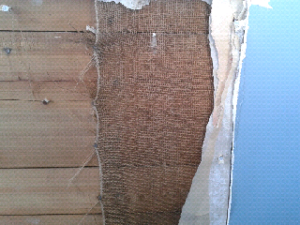Insuring Old Houses
You’ve found your dream house: it’s a gorgeous bungalow from the 1920’s. It’s picture perfect, but will it be hard to get insurance?
Why are older houses harder to insure?
Before 1935, New Zealand had no unified set of building standards. Some councils had their own bylaws, but many had no standards at all. The 1931 Napier earthquake was a wake-up call; the scale of damage made it clear that many popular construction methods were unsuitable for a country built on active fault lines.
In 1935, New Zealand’s first set of building standards were introduced. These set the basis for the Code of Compliance regulations we have today.
Houses built before 1940 can be a riskier proposition, and insurance companies – being naturally cautious creatures – need to do a little more due diligence before agreeing to cover these properties.
So, can I insure my old house?
For houses built in the 1940’s onwards, no problem – we can provide an instant quote and cover online.
If your house was built before 1940 you can still get a instant quote, but we’ll need to check over a few more details before we can confirm cover. At a minimum, we will require that it meets the conditions below.
Our minimum requirements for pre-1940 houses
1. No original electrical wiring (including switchboards)
Electrical wiring in the early 1900s was cloth-wrapped rubber, insulated in metal conduit. This was highly prone to deterioration and has been a leading cause of house fires. As a result, many houses were rewired during the 1950s and 1960s.
However, there are still properties around with their original wiring. We need to have confirmation the original wiring has been replaced with TPS (thermoplastic-sheathed) wiring.
if you’re unsure, you can get a registered electrician to inspect and provide a wiring certificate to confirm it is TPS.
2. Roof replaced within the past 30 years, or in good condition
An iron roof is expected to last about 50 years. As a roof ages, it will rust and loosen, and leaks can develop. Good maintenance and regular painting will get you so far, but eventually it will need to be replaced.
Faulty roofs are a leading cause of property damage. Therefore, we will consider cover only if your roof has been replaced in the last 30 years or is shown to be in good condition.
3. No walls lined with Scrim or Sarking
Scrim is hessian sacking that is stapled to thin wooden strips known as sarking. Think of it as kindling and newspaper – the perfect fire-starter. Wallpaper was glued directly to the scrim, and in old houses this may have been wallpapered and painted over many times.
To check if your house still has scrim, try the knock test. Scrim will sound like you are knocking on wood, and it will be hard to distinguish any studs. The wallpaper also might ‘float’ or bulge in some areas or have a texture from the hessian fabric underneath.
Because of the increased fire risk, we need conformation there is no scrim or sarking, or that it has been removed.
4. No Historical Classification
Occasionally, older houses have a local council or government historical classification. This means there are strict rules around preserving the building style and fabric of the house. If it’s damaged, the government may require it to be repaired to a certain style with particular materials.
This can make a potential claim very complicated. Because there are rebuild requirements that we cannot meet – for instance, old houses often used native Kauri wood, which is no longer available.
We are unable to insure your house if it has a historical classification. You can search addresses on the government’s Heritage List here.
5. Exterior cladding has no outstanding maintenance
New Zealand homes are often clad in weatherboards, which were originally made from native timber. Unlike modern materials, weatherboards require frequent maintenance, including regular painting. Unmaintained weatherboards on older homes will begin to rot over time, reducing weather-tightness.
We require at a minimum that your house has no cladding defects, such as rotting.
6. Original piles and foundations with no defects
It is common for older houses to have foundational issues. Sagging or wavy floorboards are an indicator of problems with the piles. Check under the house for any cracks and signs of shifting, or decay in the timber piles. Mould can also be an early warning sign of weak foundations and other problems.
Sinking or rotting foundations are structurally unsound and therefore unsafe. For us to consider insurance, there must be no problems in your house’s foundations. Fortunately, old houses can be professionally re-piled.
My house meets those conditions – what’s next?
Fantastic, there’s a good chance your pre-1940 house can be covered. If you know your old home meets our requirements, go ahead and get a quote below.
Submitting a Referral
If you want to go ahead with your quote, you’ll need to scroll to the bottom, select your preferred payment method, then select ‘submit referral’. This will take you through our online application where you can submit a cover request for your house (you won’t need to make any payment just yet!).
Our team will review your application, and get back to you to confirm if we can offer you cover.
My home’s been fully renovated, what date of build do I use?
Whilst the fact that the home has been fully renovated will be of importance to us, you do need to declare the original home build date on the application as the decade built.

